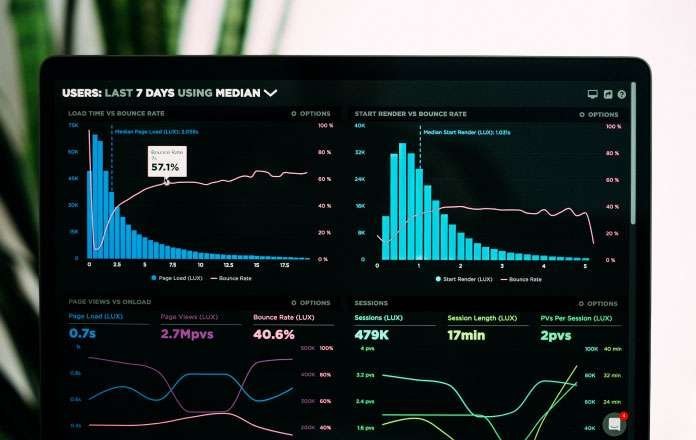Big Data analysis has affected pretty much every area of our economy, so it’s nothing unexpected that it is likewise changing the way that we work with geospatial information. This effect is a two-way, however. Similarly as the capacity to investigate more information than any time in recent memory is making geospatial information more impressive and important than any other time, geospatial knowledge drawn from the IoT is super-charging Big Data examination.
This year, we’ve seen a lot of instances of this, from the way that the IoT has helped in the Covid-19 quarrel to hypothesis over the way that it has changed ecommerce business through ongoing coordination’s observing and a large group of related technologies. With these energizing new improvements as a primary concern, in this article we’ll investigate the present status of the workmanship with regards to geospatial information in Big Data analysis, the elements that drive the current blast, where the two fields have productively covered, and what’s on the horizon for both.
Big Data and GIS
The principal thing to note about the enlivening converge of geospatial information and Big Data analysis is that this is anything but an altogether new wonders. It is the following outskirts for development path in 2011. Indeed, even at that close “pre-recorded” time we were seeing some inventive, get over arrangements that drew on the two fields.
For very nearly 10 years after that report, nonetheless, the expense of equipment kept down mass sending of gadgets that could gather geospatial information. Perhaps the biggest part of this cost was that of capacity. For instance, the expense per gigabyte for PC stockpiling in 2010 was 10 pennies. In 2017, that dropped by a factor of five to two pennies for every gigabyte. Today, as these costs keep on falling, it has at long last gotten attainable for even little firms to convey Big Data analysis on geospatial information.
Not that this is the solitary test confronting this sort of investigation. In the previous year, and especially with regards to the geological following that has been conveyed to battle the Covid-19 infection, residents have raised real worries about the measure of information gathered on their developments and how it is utilized. While the move to more private apparatuses and applications is certifiably not a head-first surge yet, sooner or later it might have an effect on the geospatial insight industry. All things considered, the expectations such analysis yields is just on a par with the information going in.










30 comments
Regards for helping out, fantastic information.
Whats Taking place i’m new to this, I stumbled upon this I’ve found It absolutely useful and it has helped me out loads. I hope to contribute & help different customers like its aided me. Great job.
Thank you for the auspicious writeup. It in fact was a amusement account it. Look advanced to more added agreeable from you! By the way, how can we communicate?
Hello there! I could have sworn I’ve been to this blog before but after browsing through some of the post I realized it’s new to me. Anyhow, I’m definitely glad I found it and I’ll be bookmarking and checking back frequently!
I love your writing style truly enjoying this site.
Hi would you mind sharing which blog platform you’re working with? I’m looking to start my own blog in the near future but I’m having a difficult time choosing between BlogEngine/Wordpress/B2evolution and Drupal. The reason I ask is because your layout seems different then most blogs and I’m looking for something completely unique. P.S Sorry for being off-topic but I had to ask!
Valuable information. Fortunate me I discovered your site by accident, and I’m stunned why this twist of fate did not took place earlier! I bookmarked it.
I was wondering if you ever thought of changing the layout of your blog? Its very well written; I love what youve got to say. But maybe you could a little more in the way of content so people could connect with it better. Youve got an awful lot of text for only having 1 or two pictures. Maybe you could space it out better?
I dugg some of you post as I cogitated they were very helpful very useful
Everything is very open and very clear explanation of issues. was truly information. Your website is very useful. Thanks for sharing.
Howdy very nice blog!! Guy .. Excellent .. Amazing .. I will bookmark your site and take the feeds additionally?KI am happy to find numerous useful info here within the submit, we’d like work out extra techniques in this regard, thanks for sharing. . . . . .
Excellent read, I just passed this onto a friend who was doing a little research on that. And he just bought me lunch because I found it for him smile Therefore let me rephrase that: Thanks for lunch! “Procrastination is the thief of time.” by Edward Young.
I want examining and I conceive this website got some really utilitarian stuff on it! .
Hello there I am so happy I found your webpage, I really found you by accident, while I was researching on Bing for something else, Anyways I am here now and would just like to say thanks a lot for a remarkable post and a all round interesting blog (I also love the theme/design), I don’t have time to go through it all at the minute but I have book-marked it and also included your RSS feeds, so when I have time I will be back to read a lot more, Please do keep up the superb job.
I don’t ordinarily comment but I gotta tell appreciate it for the post on this amazing one : D.
Thanks for sharing superb informations. Your web site is very cool. I’m impressed by the details that you have on this web site. It reveals how nicely you understand this subject. Bookmarked this website page, will come back for more articles. You, my pal, ROCK! I found simply the information I already searched all over the place and simply could not come across. What an ideal web site.
What Is LeanBiome?LeanBiome is a natural weight loss supplement that reverses bacterial imbalance in your gut microbiome with the help of nine science-backed lean bacteria species with Greenselect Phytosome, a caffeine-free green tea extract crafted with patented
excellent post, very informative. I wonder why the other experts of this sector don’t notice this. You should continue your writing. I’m sure, you have a huge readers’ base already!
obviously like your web-site but you need to take a look at the spelling on several of your posts. Several of them are rife with spelling issues and I find it very bothersome to tell the reality however I will certainly come again again.
Hello.This article was really remarkable, particularly because I was looking for thoughts on this subject last Wednesday.
Great article and straight to the point. I am not sure if this is in fact the best place to ask but do you guys have any ideea where to hire some professional writers? Thx 🙂
An interesting discussion is worth comment. I think that you should write more on this topic, it might not be a taboo subject but generally people are not enough to speak on such topics. To the next. Cheers
I like what you guys are up too. Such clever work and reporting! Carry on the excellent works guys I¦ve incorporated you guys to my blogroll. I think it will improve the value of my site 🙂
Hey there! This is my first visit to your blog! We are a team of volunteers and starting a new initiative in a community in the same niche. Your blog provided us beneficial information to work on. You have done a extraordinary job!
You have noted very interesting points! ps decent site.Raise your business
Wonderful beat ! I would like to apprentice at the same time as you amend your web site, how can i subscribe for a weblog web site? The account aided me a applicable deal. I had been a little bit acquainted of this your broadcast provided vibrant clear concept
I like this post, enjoyed this one thankyou for putting up.
I have recently started a web site, the info you offer on this web site has helped me greatly. Thanks for all of your time & work. “The more sand that has escaped from the hourglass of our life, the clearer we should see through it.” by Jean Paul.
I’m not sure why but this blog is loading incredibly slow for me. Is anyone else having this problem or is it a issue on my end? I’ll check back later on and see if the problem still exists.
Hello my loved one! I wish to say that this article is amazing, nice written and come with almost all significant infos. I?¦d like to look extra posts like this .